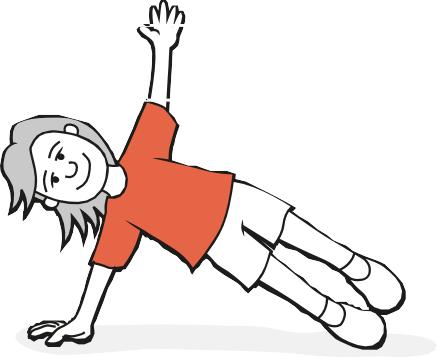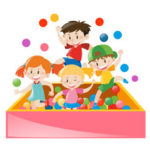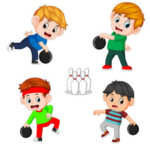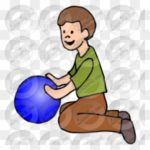
Movement skills/concepts
Static balance, dynamic balance, body and space awareness.
Set-up
Mats.
Children, each with space on a mat, are scattered around an area with an even surface.
Activity
Can you balance …?
- on one body part, (e.g. on your side, back, front, shoulders, knees)
- as above but with your eyes closed
- while moving your weight from one body part to another part, (e.g. from one foot, to your tummy, to your back)
- two body parts, (e.g. on one hand and one knee)
- three body parts, (e.g. on one elbow, one foot, and one knee)
- as above while holding for three seconds (count ‘alligators’ or ‘thousand’ as one second)
- on two/three body parts that are on the same/different sides of the body
- at different levels – low, medium and high
- starting low, moving to a high position and finishing with a low position
- on one foot and change the position of your arms, bottom, and other foot
- while changing the position of your base, (e.g. start with a balance on two feet, move one in front of the other, lower your level, now bring feet close together and raise your level)
- while traveling through space in any way you choose (e.g. walking, hopping, like a robot), then, on a signal, creating a static balance, (e.g. balance on different body parts, making different shapes and at different levels)
Can you see …?
• tight muscles
• balancing like a statue – not moving
You could ask …
Which sort of balance gave you the best base of support? Which sort of balance was easy to hold for three seconds?
Variations
Combine balances: Create your own balance story, (e.g. change from a one-body-part balance to a three-body-part balance to a four-body-part balance). Hold each one for three seconds.
Add levels and shapes to balance story: For example, move from a one-body-part balance at a high level, to a two-body-part balance in a wide shape, to a three-body- part balance at a low level.
COOL DOWN/ CLOSURE
Review Skill/Activity, stretching, and questions.







